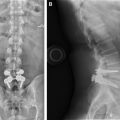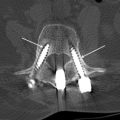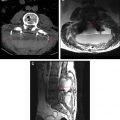
A working knowledge of commonly performed spine surgeries and spine interventions facilitates a thorough evaluation of the postoperative spine. The interpreting radiologist should possess a reasonable understanding of the procedure that was performed. A discussion with the referring clinician may not only clarify exactly what was done, but also allow the referring clinician to express their specific concerns about the case. An understanding of the “normal” imaging appearances of the postoperative spine is paramount. The radiology report is critical and should help both the referring clinician and the patient. Poorly worded or circumscribed reports are of limited value and may serve as fodder for medicolegal issues. With the advent of patient portals, these reports must be appropriately rendered so as not to confuse the patient. Last, in this new era of value-based imaging, appropriate diagnostic imaging and reporting take on potentially more meaningful use.
This issue of Neuroimaging Clinics deals with postoperative spine imaging and evaluation. I thank all of the authors for emphasizing the practical aspects in this area of spine care. The initial articles update the reader on current spine surgery techniques and approaches, including fusion and motion-sparing spine instrumentation. A spine surgeon shares his concerns over the information that he requires after ordering an imaging examination in an operated patient. This concept also applies to postprocedure imaging in patients who have undergone percutaneous vertebral augmentation or are being treated for cancer that involves the spinal axis. An awareness of potential treatment-related complications that might occur in any of these patient groups is very important. Given the diagnostic challenges of adequately imaging postoperative spine patients, emerging techniques for artifact reduction are introduced and reviewed. Specific situations in which our expertise is sought out include the management of postoperative fluid collections and spine infection. It is, therefore, my hope that readers will find this issue of particular practical value in addressing what is initially perceived as a complex case mix.
Stay updated, free articles. Join our Telegram channel

Full access? Get Clinical Tree






